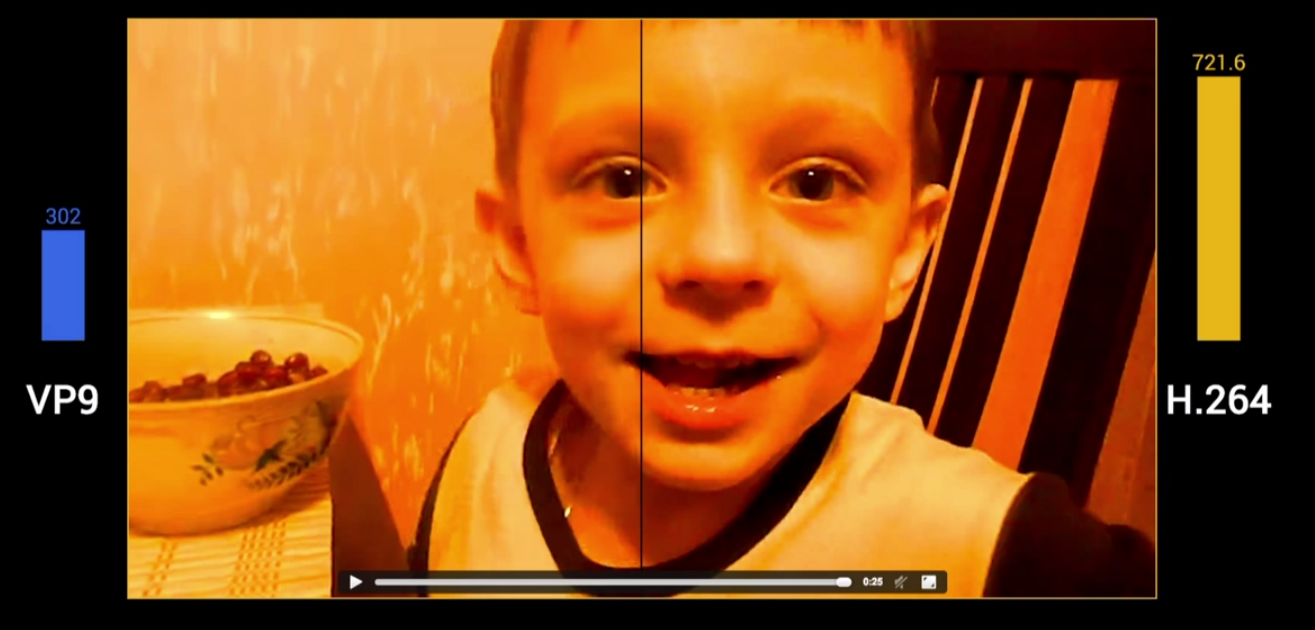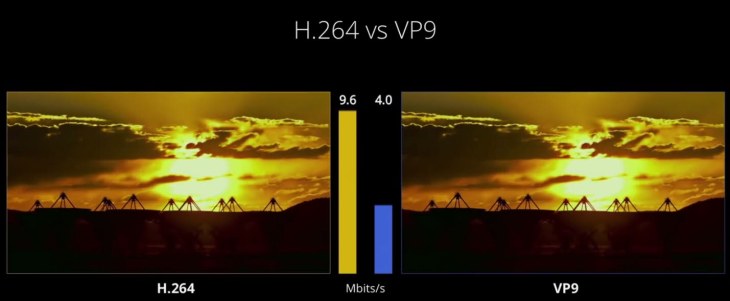Google’s VP9 video codec is getting a major boost today. While Mozilla, Google’s own Chrome browser and a few video players like FFmpeg started supporting VP9 over the course of the last year, what was mostly missing from Google’s ecosystem for this highly efficient video codec was hardware support. As Google announced today, however, virtually all major hardware vendors will soon support VP9 natively in their products and allow Google’s YouTube to stream HD content up to 4K directly to computers, TVs and mobile devices.
These new hardware partners include ARM, Broadcom, Intel, LG, Marvell, MediaTek, Nvidia, Panasonic, Philips, Qualcomm, RealTek, Samsung, Sigma, Sharp, Sony and Toshiba.
As Francisco Varela, Google’s global director for platform partnerships told me, we should see native support for VP9 in TVs and Blu-ray players in many of the 2015 models of these manufacturers, and computers and mobile devices will also start supporting it over the course of 2014. For most laptops and high-end mobile devices, hardware support is optional, as they can use a software decoder. For the best results, though – and the longest battery life – hardware support is necessary. Virtually all of these manufacturers already offer this support for H.264.
Google argues that encoding videos with VP9 results in about 50% bandwidth savings compared to its older VP8 codec or the H.264 standard.

As Varela told me, support for VP9 on YouTube means that videos will start faster (there’s less data to move, after all), though it will take a while before the site has converted all videos to VP9. While the new codec will make streaming at any resolution faster, HD – and especially 4K video – will see the biggest benefits. For 4K, Varela argues, more efficient codecs are “absolutely necessary.” While 3D obviously didn’t go the way the industry wanted, he believes 4K will be adopted very quickly, especially as prices for both 4K screens and cameras drop to more reasonable levels over the next few years.
Signing up industry partners, he argued, was pretty easy, given that VP9 is unencumbered by complicated licensing issues. Google is also making the codec available for free, while hardware and software vendors who want to use the H.264 standard have to pay a licensing fee to MPEG LA (which then distributes it to the various patent holders).
LG, Panasonic and Sony will demonstrate YouTube in 4K at CES this year and YouTube says that it has been working with a number of video creators to get them to record in 4K as well.
Google has been struggling to get others to adopt its WebP image format, which is based on the same technology as the VP8 and 9 codecs. VP9, however, seems to have struck a chord with hardware manufacturers. Google is mostly interested in having them support it in order to deliver a better YouTube experience, but in the long run, other video sites will also profit from the company’s work in getting the format adopted by OEMs.
If you’re interested in the technical details surrounding VP9, here is Google’s I/O session from 2013 that covers the topic in more detail:
